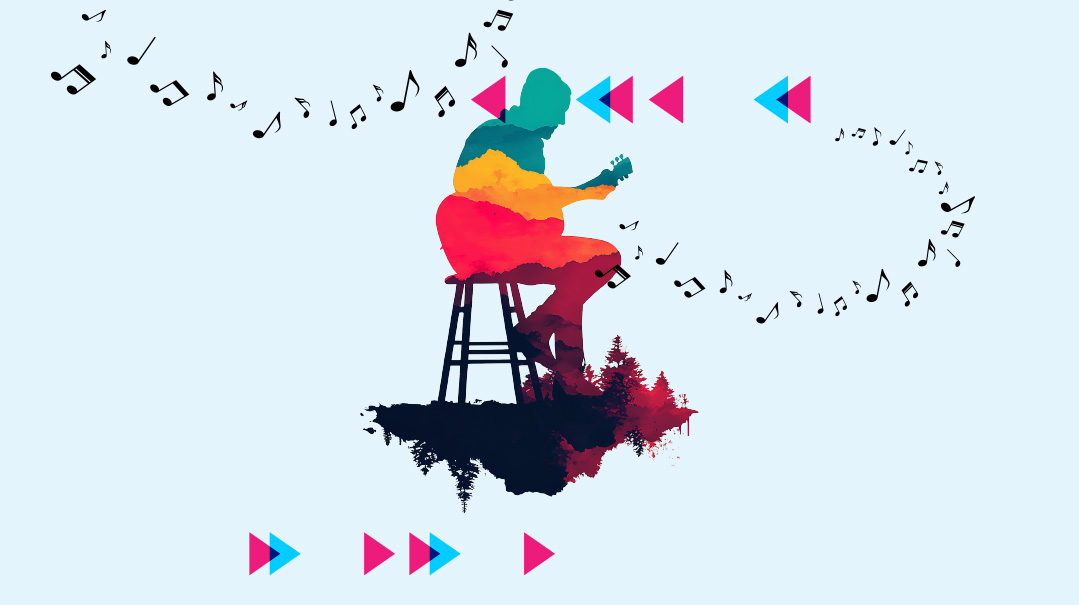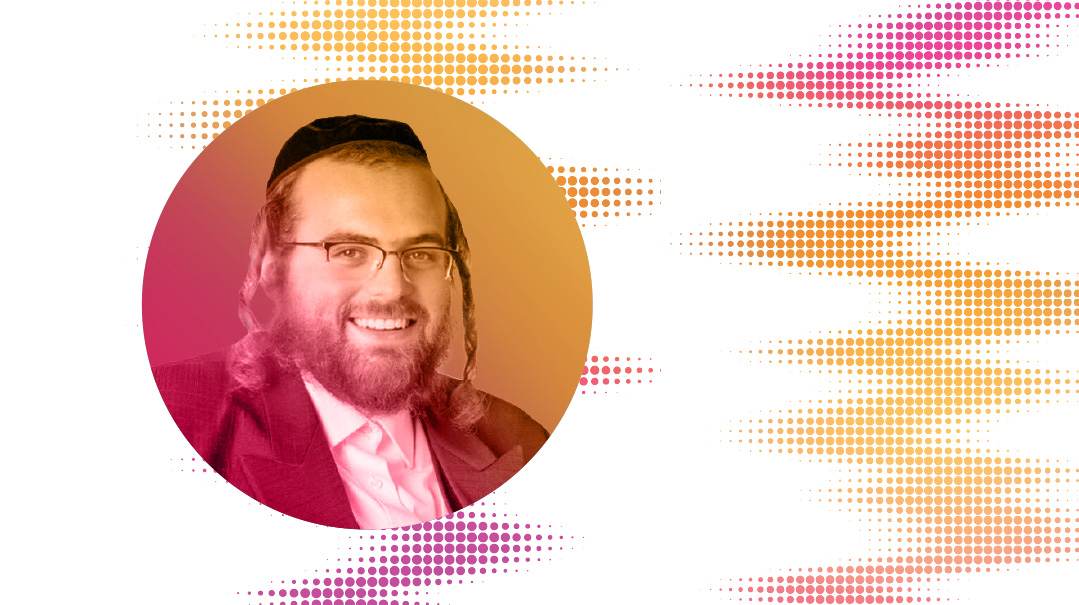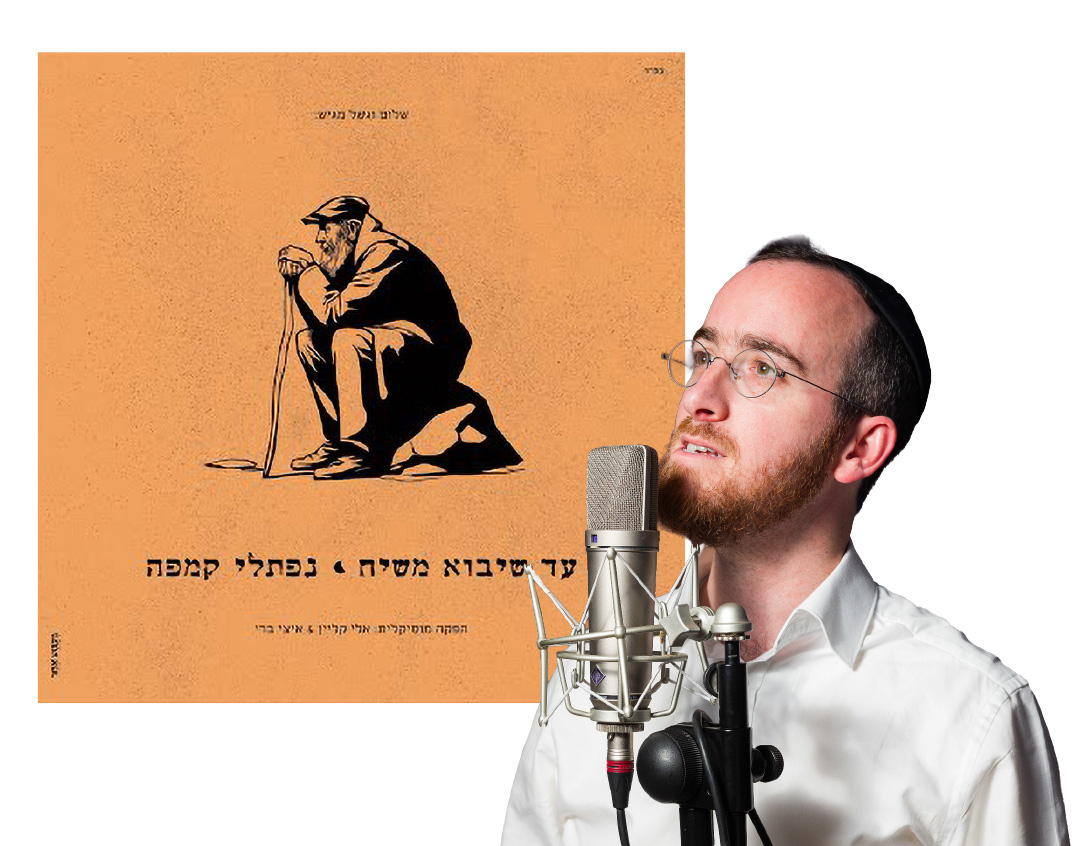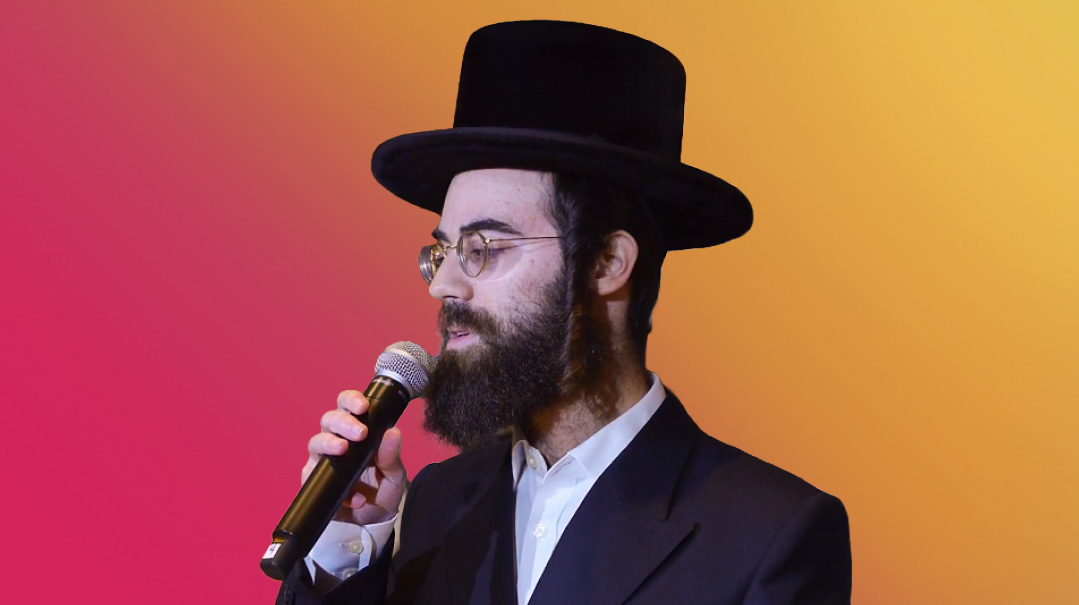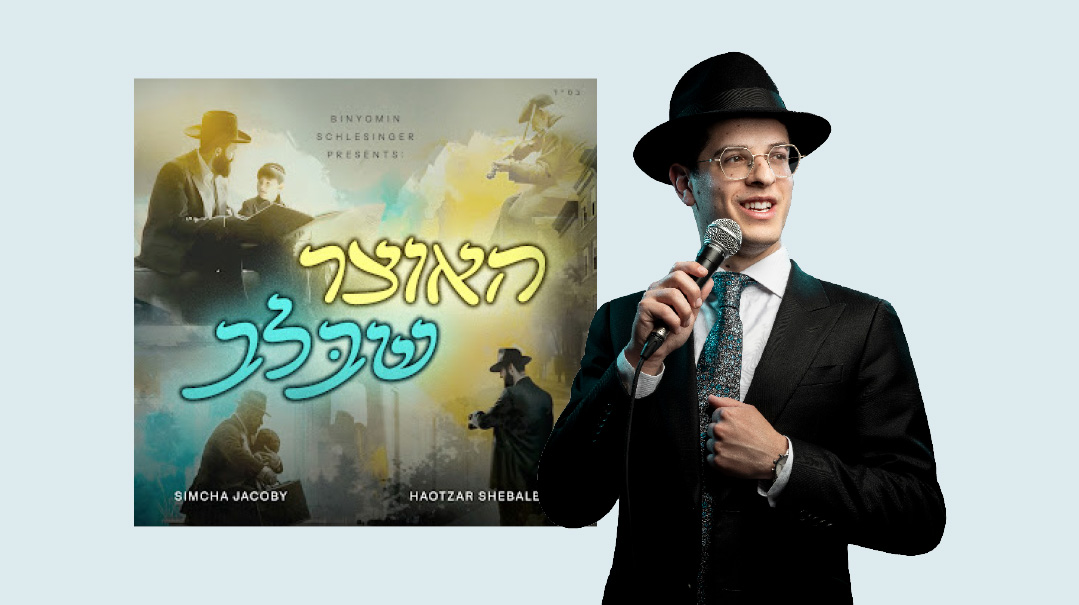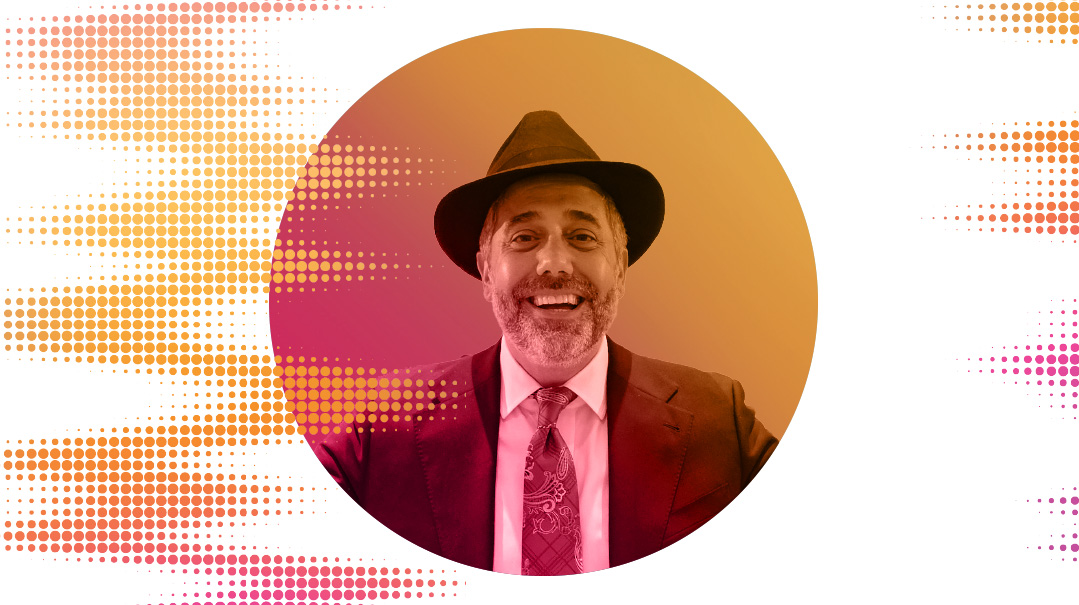Mood Mix with Chazzan Tzudik Greenwald
| September 20, 2022He travels from Israel regularly to inspire the large German community in Frankfurt with beautiful prayers
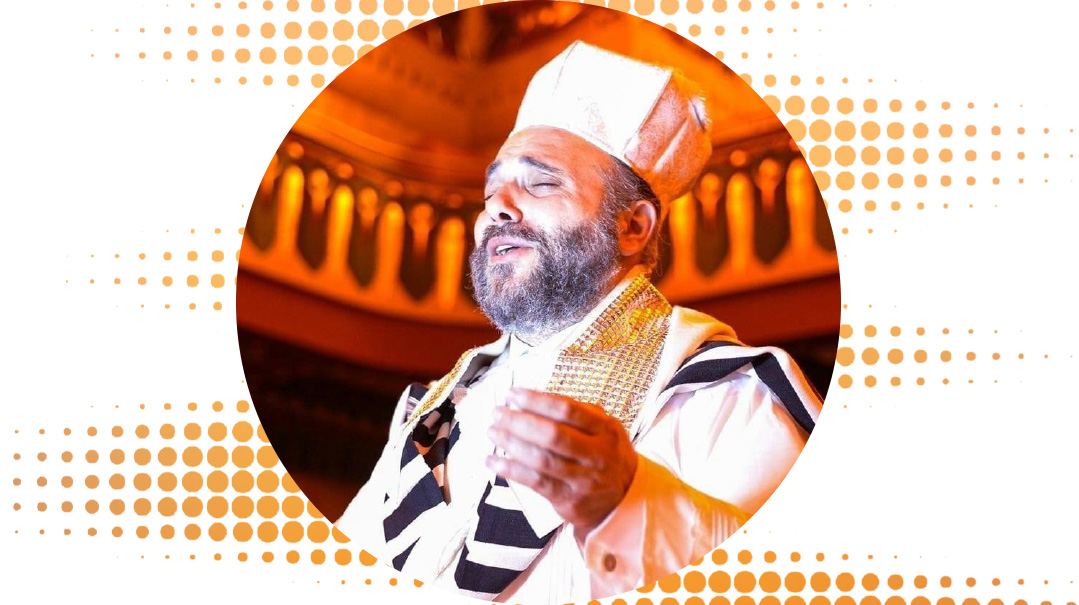
His style is an unusual blend of chazzanus and popular chassidish singing, which makes CHAZZAN TZUDIK GREENWALD, chief cantor at the Great Synagogue in Frankfurt, such a great listening experience. He travels from Israel regularly to inspire the large German community with beautiful prayers. His sweet, strong voice gained recognition on his debut album Brothers/Achim/Brider, produced by Yossi Green, some well-loved singles, video clips and performances world-wide. He is currently working on an album of chazzanus.
A SONG THAT GETS ME INTO YAMIM NORAIM MOOD
“Machnisei Rachamim.” It connects to the neshamah, and to the crowd. We sometimes use the tune for “Mimkomcha” in Kedushah of Shacharis at this time of year,
which gets us into the Selichos spirit.
A SONG THAT TAKES ME BACK TO MY CHILDHOOD
The Regesh song, “Ko Amar Hashem.” That was the song, at Yeshivas Beis Dovid’s annual dinner, that I first sang as the choir soloist when I was growing up in Monsey.
WHEN I START PREPARING FOR YOM TOV
I work all year round on developing my voice for the Yamim Noraim. Two months before Rosh Hashanah I begin to warm up my voice, practice the nusach, and look for a few new ideas and songs that the community can connect to.
MY NUSACH STYLE
My main davening is built on the traditional nusach. I didn’t grow up with chazzanus, although I always enjoyed good baalei tefillah, and I first absorbed a chazzan’s nusach from Cantor Moshe Stern. Then, like every chazzan today, I listened to multiple recordings, picking the nicest and most powerful elements from each one, gaining influences from all the great chazzanim of yesteryear and incorporating them. Sometimes within the tefillos, there’s an opportunity for real “chazzanishe shtiklach,” sung with the choir, but I’ll only do it two or three times over each Yom Tov.
A NIGGUN THAT ALWAYS ENGAGES THE CROWD
Here in Frankfurt, opening the aron kodesh to take out the sifrei Torah is a big highlight. The crowd stands, crying, as we daven the special “Ribbono Shel Olam” tefillah, and the 2,000-strong congregation sings aloud the repeated refrain of “Hashem, Hashem, Keil Rachum.” Then, of course, there is the iconic tune for starting Barchu,”which begins Maariv of Rosh Hashanah, and the nusach of LeDavid Mizmor at the end of Maariv. As in any shul, people join in for Unesaneh Tokef, “Kevakaras,” “Ein Kitzvah,” “Haben Yakir Li,” and Areshes Sefaseinu.
A SONG I LOVE TO SING DURING DAVENING
One of my favorite songs of all time, a beautiful piece that moves me to tears with its emotion, is MBD’s “Be’ein Meilitz Yosher” from his 1984 album Let my People Go. In my opinion, that may be one of the nicest, warmest pieces that MBD ever sang in his nearly five decades of music.
MY BIGGEST CHAZZANUS CHALLENGE
There are two: to have kavanah while not detracting from the musical quality of the tefillah, and to connect the congregation to the tefillah through the niggun and my own kavanah.
A NIGGUN THAT TAKES ME BACK TO YOM TOV OF MY CHILDHOOD
MBD’s vintage “B’Rosh Hashanah,” which continues to “Ein Kitzvah.” I used to hear it from the baal tefillah Rav Yehuda Shain, where we davened at Rav Chaim Flohr’s kollel on Maple Terrace in Monsey.
THE CHAZZANIM WHO MOST INFLUENCED ME
My mentor is Chazzan Moshe Stern, who launched my career in chazzanus and taught me the nusach. In addition, I’ve been influenced by the chazzanus of greats such as Cantor Zevulun (Zavel) Kwartin and the Koussevitzky brothers.
ONE ALBUM I WOULD TAKE ON A LONG ROAD TRIP
In the music world, I would pick an old MBD album, because MBD is my favorite singer, and his vintage albums contain the real gems. In chazzanus I would pick something from Zevulun (Zavel) Kwartin. I love Kwartin’s warmth. He passes on the traditional nusach, even in his compositions, by incorporating elements from the nusach, which I believe is important. Even if you’re composing something original, you should stay on the musical chords of the nusach, like the masters did.
HOW I BECAME A CHAZZAN
About 20 years ago, I was working in the (now defunct) Mitzei Uri juice store on Rechov Malchei Yisrael. One cold and rainy day, I was sure that no one would be stepping into the store to buy a cup of juice, so I went into the back kitchen and started singing. All of a sudden, I noticed there was a customer waiting. “What are you doing here?” he said to me.
I thought he was annoyed that I wasn’t attending to him, so I said, “I’m here to serve you.”
He said again, “What are you doing here, with a voice like that?”
“I need to start somewhere,” I said.
The customer asked if I knew who he was — I didn’t. It turned out that he was a brother-in-law of Cantor Moshe Stern. He went to tell Moshe Stern about the voice he had heard in Mitzei Uri, and that same day, the well-known chazzan called me to come over. I sang a few pieces of chazzanus for him, and then he stood up, gave me a kiss on my forehead, and told me that we would be learning nusach and interpretation together twice a week.
One of the first things he taught me was, “If you want to be a chazzan, you first need to learn peirush hamilim, so you understand every single word that comes out of your mouth. Before you do that, you can’t begin learning nusach. Imagine speaking to someone important in a language you don’t understand.” He was one hundred percent right.
MY FAVORITE PIECES OF CHAZZANUS
Cantor Mordechai Hershman (1888-1941) left us with some beautiful pieces. Hershman was Ukrainian-born and served as chazzan in the Young Israel Beth El of Boro Park. Actually, even people who don’t like chazzanus like to listen to him. I very much connect to his “Mipnei Chata’einu,” “Mimkomcha,” and especially his “Modim.” I occasionally sing that on a special Shabbos. Another very Shabbosdig shtikel is Cantor Moshe Ganchoff’s “Retzei.” Like Kwartin, Ganchoff’s pieces are based on traditional nusach.
ONE THING I’LL NEVER CHANGE
The nusach of Shemoneh Esreh, including the paragraphs that begin “Uvechein tein pachdecha...” and “Uvechein tein kavod…” And obviously, Kol Nidrei.
MY MOST MEMORABLE DAVENING
It’s been 14 amazing years of serving as chazzan in Frankfurt’s Great Synagogue, but the most memorable davening was the Kol Nidrei that I davened in an almost empty sanctuary on Motzaei Yom Kippur for a Jew who came to shul on the wrong night by mistake. As a child, his father had brought him to shul for Kol Nidrei, and when he passed away, he had made his son promise he would not miss that prayer. I wanted to give that Yid his Kol Nidrei.
SOMETHING NEW FOR THE NEW YEAR
The community in Frankfurt hasn’t davened together as usual for three years because of Covid. This year, we’re hoping to go back to pre-Covid crowds of 2,000 people in shul, and I hope that will stimulate a special atmosphere. I’m looking forward to a new generation of youngsters who haven’t seen a shul in a very long time and hopefully will be inspired.
(Originally featured in Mishpacha, Issue 929)
Oops! We could not locate your form.

